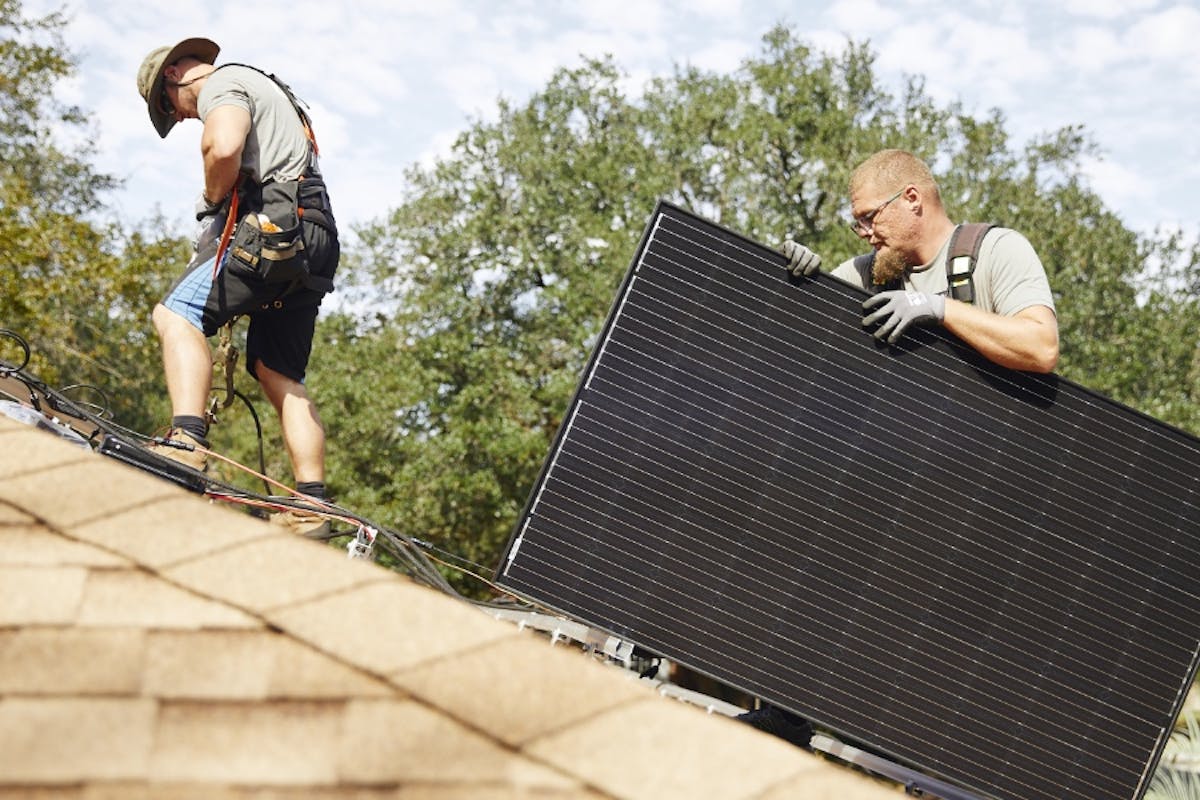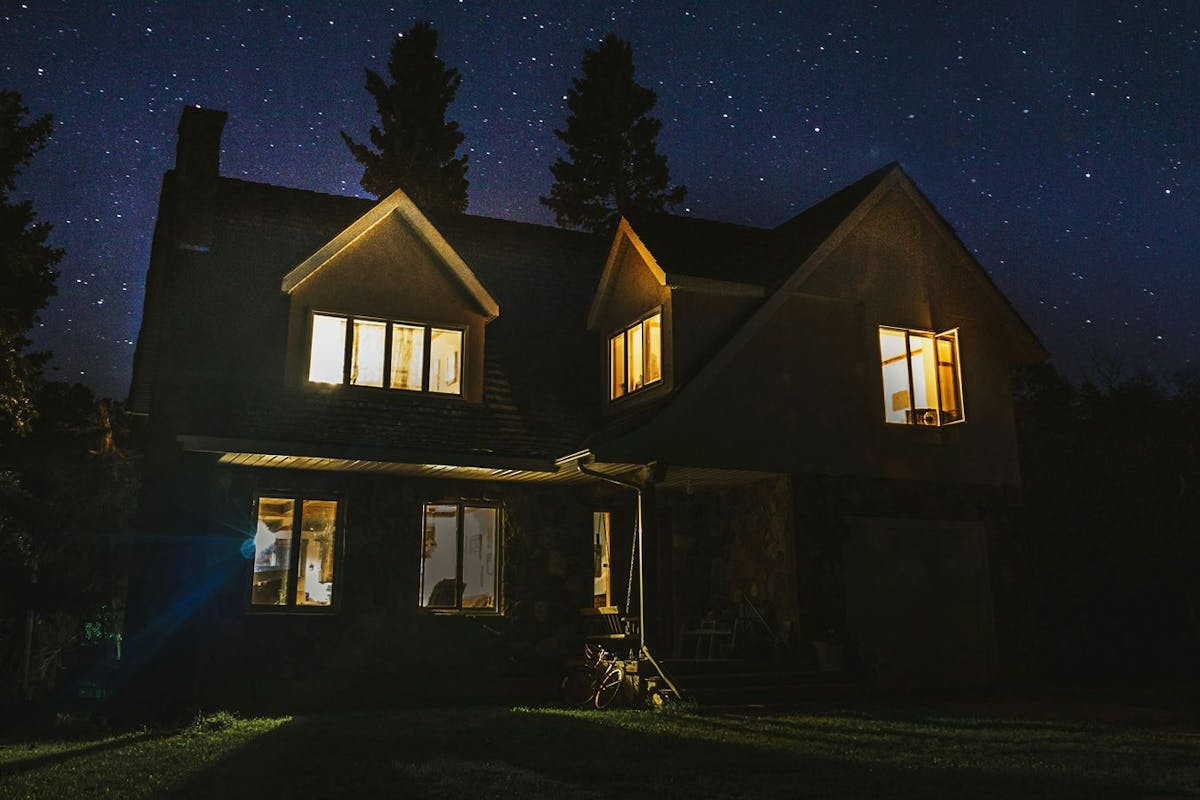Solar Panel Size and Wattage Guide: What Works Best for Homes
Last edited

Author
Andrew Giermak
Solar and Electrification Writer and Editor

Editor
Andrew Blok
Electrification and Solar Writer and Editor

Solar panels look pretty much alike — black or blue rectangles attached to a roof — but there are some differences. One of those is size.
Solar panel size is measured in at least two different ways: physical dimensions and wattage. How does a homeowner know what size their roof needs? Luckily, you can get a valuable solar installation with larger or smaller panels and a professional solar company can guide you through that process. Here's how solar panel size plays a role.
See how much you can save by going solar with Palmetto
Solar Panel Size vs. Solar Panel Wattage
When searching for different solar panel sizes online, you may find panels are differentiated by their wattage, or by the number of cells on a panel, rather than their physical dimensions or arbitrary sizes like small, medium, and large.
A solar panel’s wattage, or power capacity, refers to its energy generation potential, with higher wattage panels able to deliver larger amounts of solar electricity. Solar panel wattage is abbreviated simply with a “W'' and 1,000W is equal to one kilowatt (kW). If you want to go into more math and the metric system, you can learn more about watts, kilowatts, kilowatt-hours.
Common Sizes and Wattages
While there are no standard sizes, most of today’s premium home solar panels come in one of three primary formats, classified by the number of solar cells.
- 60-cell solar panels: 60-cell modules are the smallest residential solar panels, and today’s products have average dimensions of roughly 5.4 feet by 3.25 feet. Great for fitting on complicated roofs with limited installation space, most 60-cell solar panels are rated under 325W in power capacity.
- 72-cell solar panels: With two extra rows of cells, 72-cell solar panels are about 6.4 feet tall on average (while still 3.25 feet wide) and typically rated 400W or higher. 72-cell solar panels are ideal for residential roofs with ample installation area.
- 96-cell solar panels: Rarely used for residential installations, 96-cell solar panels usually measure around 6.4 feet by 4.3 feet. Commercial 96-cell solar panels may be rated 300W to 450W and higher.
High-quality residential solar installations in the US typically utilize solar panels rated between 250W and 430W. As solar panels get more efficient and produce more electricity, 350W is a more typical minimum size. While lower-wattage solar panels (below 250W) may work for small, off-grid systems, higher-wattage solar panels are better suited for commercial or utility installations with fewer space restraints than residential rooftops.
Strung together and wired into your home’s electrical system, solar panel wattages are added together to calculate your total solar capacity. So if you install 20 solar panels, each rated at 325W, your total solar panel wattage would be 6,500W or 6.5 kW.
Solar panels with half-cut cells
Half-cut solar cells are part of renewable energy tech innovation in 2024, with several new products now available from solar panel manufacturers. Made up of solar cells that are “cut in half,” panels with this technology are the same size with double the number of cells. These panels increase power potential in the same installation footprints.
Half-cut panels typically contain 120 or 144 half-cut cells. As a new product, solar panels with half-cut cells may not be available in all markets and are usually more expensive than traditional 60 and 72-cell panels.
See how much you can save by going solar with Palmetto
Total Dimensions for Home Solar Panel Systems
For efficient electricity production and ease of installation, nearly every home solar energy system is installed with the same panel wattage (and model) per panel throughout. Knowing this, calculating the dimensions of a solar panel array is fairly straightforward. Take the sum of the panels’ dimensions as they are arranged and installed on your roof.
To illustrate how much roof space is needed for solar panels, let’s say you decide to install a 9.6kW system to offset your home’s electricity use. This capacity can be created with 24 72-cell 400W solar panels, covering about 21 square feet each. In this scenario, you would need roughly 500 square feet of installation space (21 square feet x 24 panels) to host your system.
Can You Expand Solar Panel Systems After Installation?
It’s usually possible to add solar panels to an existing system via a second system. It’s typically more straightforward and better economic sense to build the system you need at the outset.
If your circumstances change after installation, maybe you’re getting and charging an EV for the first time, maybe you’re electrifying your home, it’s likely you can expand your system. You’ll need to figure out if your system’s permitting, components, like the inverter, and your roof are compatible with more panels.
Adding solar battery storage
Another potential answer to maximizing your use of your solar electricity is adding solar battery storage.
Batteries store the unused electricity generated by your panels. You can use the power when needed, such as at night or during power outages. Instead of needing to add panels, you may be able to use your electricity more efficiently. Solar batteries can give you greater reliability, independence, safety, and savings.
How to Choose the Right Solar Panel Size
Unless you are planning a DIY solar panel installation, more often than not, you will not have to worry about choosing the right solar panel size for your home. Instead, a professional solar installer can work with you to determine the best solar panel wattage and size for your roof or property, tailored specifically to your unique energy demand, electricity costs, and available installation space.
Palmetto experts are always available to answer your questions about home solar power and ways to save money. To learn more, get a free estimate of your solar savings.
See what solar can do for you:
Frequently Asked Questions
How many solar panels do I need?
Palmetto will calculate how many solar panels you need based on your power usage, the goals you have for your solar usage, your potential savings, your roof dimensions, and more. We work with each customer to answer every question and design the specific solar system for your home.
Does the size of my solar panels matter?
Yes, the physical dimensions of your panels matter as they relate to the available space on your roof. Solar panel wattage helps you calculate the overall capacity you need for a system which meets your family’s needs.
What if solar panels don’t generate as much electricity as I need?
If your solar panels are connected to the grid and are not giving your home enough electricity, electricity from the utility company will make up the difference. If this is a problem, potential solutions include adding solar battery storage or adding panel capacity to your system.
What happens if I produce more power than I need?
If your home is connected to the grid and you have net metering, excess energy produced can flow into the grid and earn you credit on your electricity bill. If you choose to integrate energy storage with your system, any excess energy not immediately used by your household will be stored in your battery.


